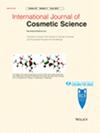The potential use of the standardized Euterpe oleracea (açaí) seed extract in cosmetic products
Abstract
Objective
The açaí (Euterpe oleracea), a palm tree fruit native to the Amazon region, holds significant potential for various applications in food, therapeutics and cosmetics. However, the seeds of the açaí fruit, known to contain numerous antioxidants, are discarded and frequently cause environmental pollution. Therefore, this study aimed to explore the potential application of açaí seeds standardized extract (TI-35) as a cosmetic product.
Methods
Açai seeds were obtained from a commercial source. Following the extract preparations and phytochemical identification and quantification of the main constituents present in the extract (TI-35), several in vitro studies were performed using human cell line cultures. TI-35 was evaluated on cell viability (human keratinocytes, fibroblasts and melanocytes), proliferation (keratinocytes), antioxidant activity (keratinocytes and fibroblasts), melanin content (melanocytes), metalloproteinase-1 (MMP-1) activity and tyrosinase inhibition assays. Skin irritation was assessed using a reconstructed human epidermis and mutagenic potential was evaluated, according to the OECD 439 and OECD 471, respectively.
Results
A total of 14 phytochemical constituents, mainly phenolic compounds, were identified and quantified in the standardized extract TI-35. It demonstrated excellent long-lasting stability and exhibited intrinsic antioxidant activity surpassing that of ascorbic acid. At low concentrations (up to 10 μg/mL), TI-35 did not change cell viability or proliferation. However, the TI-35 decreased basal reactive oxygen species production and produced pronounced scavenging and antioxidant effects. Notably, TI-35 caused inhibition of MMP-1 and its effect was more pronounced when compared with either ascorbic acid or ferulic acid, highlighting its pro-aging property. In addition, TI-35 did not interfere with melanin levels or have skin irritation effect and has no mutagenic activity, providing a solid assurance of the safety of the standardized extract from the seeds of E. oleracea for cosmetic use.
Conclusion
The standardized extract TI-35, sourced from E. oleracea seeds, a by-product of the Amazon food industry, demonstrated noteworthy pharmacological properties when assessed in vitro, including antioxidant, photoprotective, soothing and sagging effects. Thus, TI-35 emerges as a potential and safe option for the development of innovative cosmetic products.


 求助内容:
求助内容: 应助结果提醒方式:
应助结果提醒方式:


